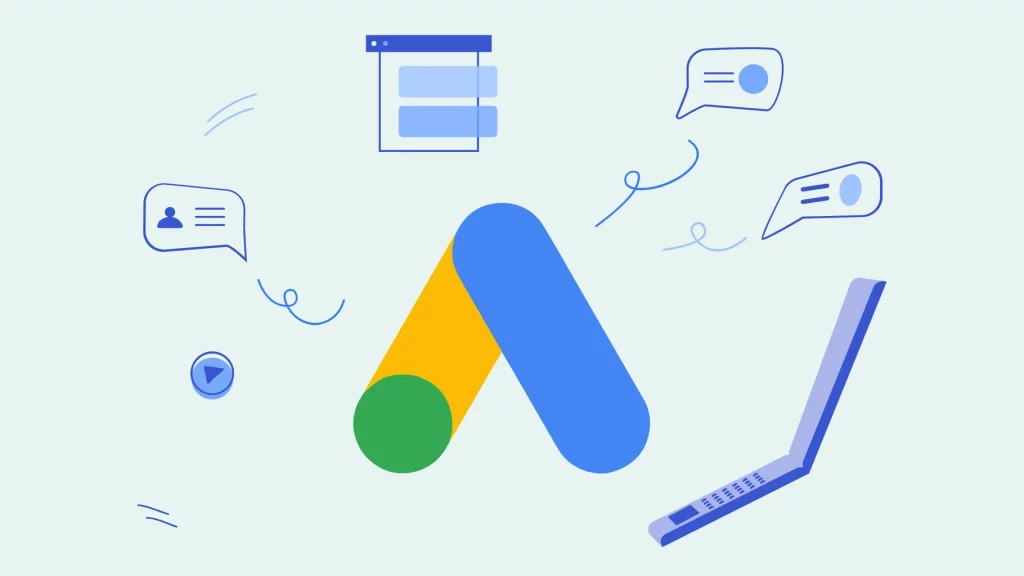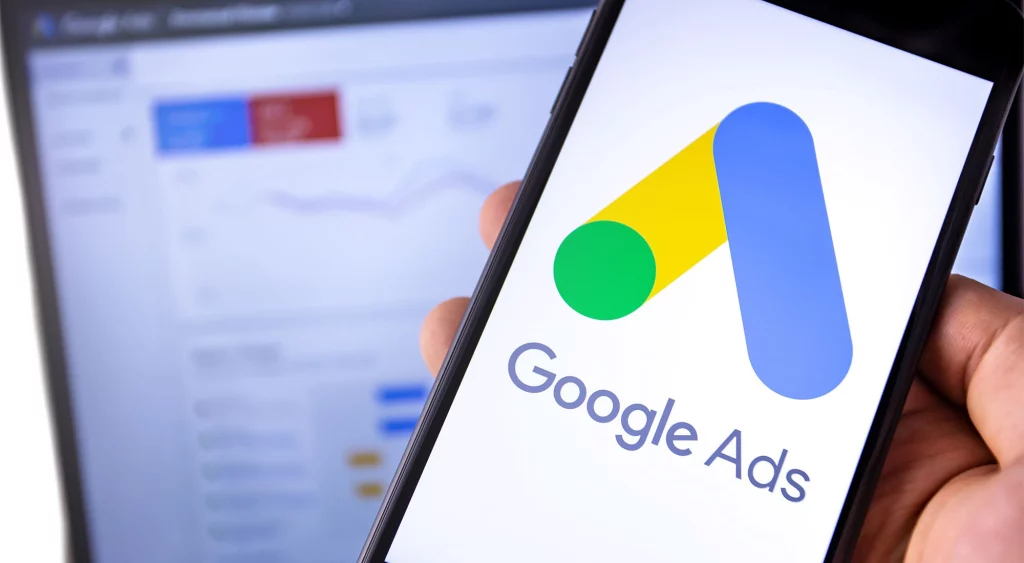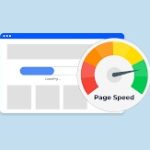In today’s competitive digital landscape, blending Google Ads with robust SEO is key to driving quality traffic, boosting conversions, and achieving your business goals. By integrating paid search campaigns with organic optimization, businesses can capture both immediate visibility and long-term organic search rankings. This ultimate guide explores how to combine these two powerful channels to enhance your online presence, refine your bidding strategies, and ensure a seamless customer journey—from high-intent search queries to landing page conversion. Whether you’re working with limited budgets or aiming to scale through advanced techniques, this blog offers insights to maximize your digital marketing strategy.

Understanding Google Ads and SEO
Google Ads and SEO are two critical pillars in digital marketing. While Google Ads is a paid advertising platform that allows you to bid on keywords and display ads across Google Search, Display Networks, and even Google Shopping, SEO focuses on organically optimizing your website for higher rankings on search engines. Both channels rely on effective keyword research, high-quality content, and user experience optimizations. When used together, these channels can generate a steady stream of traffic—capturing users’ attention from the moment they search, and reinforcing your online visibility through organic search rankings.
- Google Ads provides immediate visibility by displaying ads to users actively searching for your services, while
- SEO builds your domain authority over time, generating quality organic traffic that boosts conversion rates.
This synergy ensures that your digital marketing efforts are aligned with user intent and business goals.
Importance of Integrating Google Ads with SEO
Integrating Google Ads with SEO creates a comprehensive digital marketing strategy that leverages both paid and organic channels. By combining these strategies, you can benefit from:
- Immediate traffic from Google Ads while working on long-term organic search improvements.
- Improved keyword performance, where high-intent search queries are validated through both channels.
- Enhanced bid strategies and budget allocation by analyzing performance metrics in Google Analytics 4 and other advanced tools.
- A unified approach to targeting, utilizing custom audiences, negative keywords, and smart bidding strategies such as Performance Max to optimize conversion rates.
This dual approach allows you to adjust your advertising efforts based on real-time data, ensuring optimal results across both channels.
Types of Google Ads
Search Ads: Benefits and Best Practices
Search Ads are text-based ads that appear on the Google Search results page when users enter relevant keywords or search queries. These ads are highly effective because they target users with clear commercial intent.
- Benefits:
- Immediate visibility on Google Search
- High click-through rates (CTR) when using Responsive Search Ads and relevant keywords
- Precise targeting using exact match, broad match, and long-tail keywords
- Best Practices:
- Use negative keywords to filter out irrelevant traffic
- Employ bid strategies like Smart Bidding to maximize conversions
- Optimize ad copy to reflect search intent and encourage customer action
Display Ads: When to Use Them
Display Ads appear on a vast network of websites and mobile apps via the Google Display Network. They use visual elements like images and banners to capture attention.
- Benefits:
- Boost brand awareness with eye-catching image ads and banners
- Reach a broad audience with targeting options including demographics, interests, and remarketing lists
- Drive users through custom audiences to improve conversion rates
- Best Practices:
- Optimize display ads for mobile devices
- Test different designs and placements using Responsive Search Ads
- Use high-quality visuals and sitelink extensions for added relevance
Shopping Ads: Ideal Use Cases
Shopping Ads are perfect for e-commerce businesses as they showcase product images, pricing, and descriptions directly in the search results.
- Benefits:
- High visual impact with product images
- Direct connection to your product feed via Google Merchant Center
- Increased conversion potential through detailed product information
- Best Practices:
- Use exact match keywords to target high-intent searches
- Optimize product titles, descriptions, and meta descriptions for SEO
- Ensure your product feed is regularly updated to reflect relevant products

Video Ads: Engaging Your Audience
Video Ads allow you to reach users on YouTube and other video partner networks. They can deliver your message through engaging visuals and storytelling.
- Benefits:
- Capture user attention with dynamic video content
- Enhance brand engagement through compelling narratives
- Ideal for demonstrating products or services in action
- Best Practices:
- Create short, impactful video content using advanced editing tools
- Include clear CTAs to guide potential customers
- Leverage bumper ads and non-skippable in-stream ads for maximum exposure
Crafting Effective Ad Copy and Creatives
Your ad copy and creative assets are crucial to converting impressions into clicks and, ultimately, conversions.
- Importance of Clear Messaging: Ensure that your message addresses the user’s needs and search intent.
- Using Actionable Language: Encourage immediate action with strong CTAs.
- Incorporating Relevant Keywords: Utilize high-intent and long-tail keywords to match your audience’s queries.
- Crafting Engaging Headlines: Develop headlines that captivate and draw users in.
- Design Elements: Use consistent color schemes, professional images, and engaging design templates that resonate with your target audience.
By refining your ad copy with these techniques, you can improve click-through rates and ultimately drive more conversions.
Importance of Conversion Tracking
Effective conversion tracking is essential for understanding the performance of your campaigns.
- Conversion Tracking: Set up tracking to measure key actions like form submissions, phone calls, or purchases.
- Google Tag: Use the Google Tag Manager to implement tracking codes on your landing pages.
- Attribution: Leverage attribution models to determine which keywords or ad types drive the most conversions.
- Optimization: Use data insights to adjust bid strategies and reallocate your budgets for better performance.
Tracking ensures that you can make data-driven decisions, improving the overall efficiency of your Google Ads strategy.
Key Metrics for Optimizing Ad Performance
Return on Ad Spend (ROAS)
ROAS measures the revenue generated per dollar spent on your ad campaigns. It’s critical for evaluating the financial efficiency of your advertising efforts.
- Calculation: Revenue divided by ad spend.
- Improvement: Use smart bidding strategies like Performance Max to boost ROAS.
Click-Through Rate (CTR)
CTR indicates how often users click on your ad after seeing it. A higher CTR suggests your ad is resonating with your target audience.
- Optimization: Refine ad copy, optimize headlines, and use compelling visuals.
- Goal: Increase CTR to lower the average cost per click.
Quality Score
Quality Score reflects the relevance of your ads, keywords, and landing pages. A high score can reduce advertising costs and improve ad placement.
- Factors: Ad relevance, expected CTR, and landing page experience.
- Action: Focus on continuous optimizations to maintain a high Quality Score.
Conducting Keyword Research
Keyword research is fundamental for aligning your Google Ads and SEO efforts.
- Tools: Use keyword research tools like Google Keyword Planner or SEMrush to identify high-volume and long-tail keywords.
- Focus on Search Intent: Ensure the selected keywords align with what your target audience is looking for.
- Competitive Analysis: Evaluate keyword difficulty and adjust your bid strategies accordingly.
- Negative Keywords: Implement negative keywords to filter out irrelevant traffic and reduce wasted spend.
Thorough keyword research lays the groundwork for successful ad campaigns and drives quality traffic to your landing pages.
Aligning Google Ads with SEO Efforts
Focusing on Search Intent
Both SEO and Google Ads should revolve around search intent. Ensure your keywords and ad copy match the needs and questions of your audience.
- Consistency: Use the same relevant keywords across your SEO content and Google Ads campaigns.
- User Journey: Create ads and landing pages that lead the user through a logical progression from interest to action.
- Integration: Combine organic search traffic strategies with paid ads to capture a wider net of potential customers.
Enhancing Website Optimization
A well-optimized website is crucial for converting ad traffic into leads.
- Landing Page Experience: Ensure that your landing pages are optimized for speed, mobile devices, and clear call-to-action (CTA) buttons.
- Internal Links: Use internal links to guide users deeper into your site.
- Content Quality: Deliver high-quality, valuable content that satisfies user intent and encourages conversions.
By aligning Google Ads with your SEO efforts, you create a cohesive marketing strategy that boosts overall online visibility and conversion rates.
Leveraging Google’s AI Features
Google’s AI-powered features, like Smart Bidding and Responsive Search Ads, help optimize your campaigns automatically.
- Smart Bidding: Uses machine learning to adjust bids in real time based on user behavior and market conditions.
- Responsive Search Ads: Allow you to input multiple headlines and descriptions, with Google optimizing ad combinations for maximum impact.
- Dynamic Search Ads: Automatically generate ad headlines based on the content of your website, ensuring relevance.
- Google AI: Helps in predicting search volumes, optimizing bidding strategies, and even adjusting campaign budgets for peak times.
Leveraging these AI features can significantly improve your campaign performance with less manual oversight, ensuring better conversion rates and lower costs.
Regular Monitoring and Testing of Campaigns
Ongoing testing and monitoring are crucial for campaign success.
- A/B Testing: Regularly test different ad copies, headlines, and creatives to see what resonates best.
- Monitoring Metrics: Use Google Analytics, Google Ads reporting, and third-party tools to track key performance metrics such as CTR, conversion rates, and ROAS.
- Adjustments: Based on performance data, refine your bid strategies, adjust your daily budgets, and update negative keywords.
- Campaign Management: Continuous monitoring helps you identify performance gaps and optimize your campaigns in real time.
Regular testing and monitoring ensure your advertising strategy remains effective, adapting to changes in user behavior and market trends.
Creating a Cohesive Marketing Strategy
A successful digital marketing strategy integrates both paid and organic efforts.
- Unified Messaging: Ensure your ad copy, landing page content, and organic search content maintain a consistent tone and message.
- Cross-Channel Integration: Combine Google Ads with SEO, social media, and email marketing for a seamless user journey.
- Budget Allocation: Allocate your marketing budget strategically between paid campaigns and ongoing SEO efforts to maximize ROI.
- Customer Journey Mapping: Analyze the full customer journey from the first search query to conversion, ensuring every touchpoint is optimized.
By aligning your Google Ads efforts with your overall marketing strategy, you can deliver a more consistent and engaging user experience, ultimately driving higher conversions.

Optimizing Campaign Goals and Performance Metrics
Setting clear campaign goals is the first step in driving effective digital advertising. Depending on your chosen Campaign Type—whether you’re running Google Search Ads, Display campaigns, or leveraging Smart campaigns—defining measurable objectives is critical. For example, tracking your average conversion rate helps you understand if your ads are successfully turning clicks into valuable actions. Advanced strategies often focus on optimizing the cost per action and cost per conversion, ensuring every dollar spent is accountable.
To achieve this, it’s important to use powerful tools for detailed analytics. With these tools, you can analyze search terms and evaluate keyword ideas based on relevant searches and broad match keywords. By incorporating these insights, you’ll better understand which keywords drive the best results and generate the highest conversion rates. Using a robust keyword research tool can reveal data on search volume and keyword difficulty, guiding you to focus on high-intent terms that yield a strong return.
Additionally, monitoring foot traffic data can be vital for businesses with physical locations, enabling you to measure the impact of your ads on local in-store visits. Detailed analytics not only highlight performance gaps but also help gauge your market share in competitive industries. By integrating first-party data into your campaign analysis, you can refine targeting for a more personalized approach. Utilizing the search bar in your analytics dashboard allows you to quickly adjust bids and budget allocations based on real-time performance insights.
By continually refining your strategies with these advanced techniques, you can make informed decisions that drive down costs while boosting overall campaign performance. This comprehensive, data-driven approach ensures that every ad you run—whether it’s through Google Search Ads or dynamic Smart campaigns—is optimized for maximum impact and aligned with your long-term business goals.
Why Choose LinkLumin?
At LinkLumin, we specialize in crafting integrated digital marketing strategies that combine the best of Google Ads and SEO. Our expert team understands the intricacies of bidding strategies, keyword research, and audience segmentation. We work closely with businesses to design, implement, and continuously optimize campaigns that drive high-quality traffic and maximize conversion rates. Whether you’re targeting local customers or aiming for a broader audience, our data-driven approach ensures your campaigns meet their business goals. Let us help you transform your marketing efforts into measurable, long-term success.
Conclusion
Integrating Google Ads with SEO creates a robust digital marketing strategy that drives immediate traffic and long-term organic growth. Businesses can enhance conversion rates and maximise ROI by aligning ad copy, bidding strategies, and keyword research with user intent. From using dynamic search ads and smart bidding powered by Google AI to optimizing landing pages for a seamless customer journey, every component plays a vital role in your success. Embrace these strategies to build a cohesive marketing plan that meets your business goals. Partner with LinkLumin today to elevate your digital advertising efforts and achieve unparalleled success.
Tags




